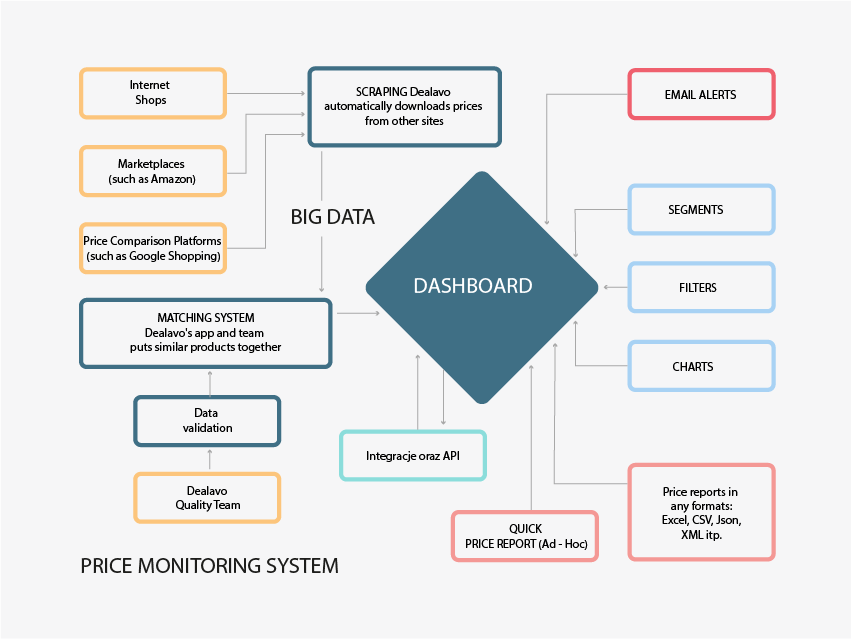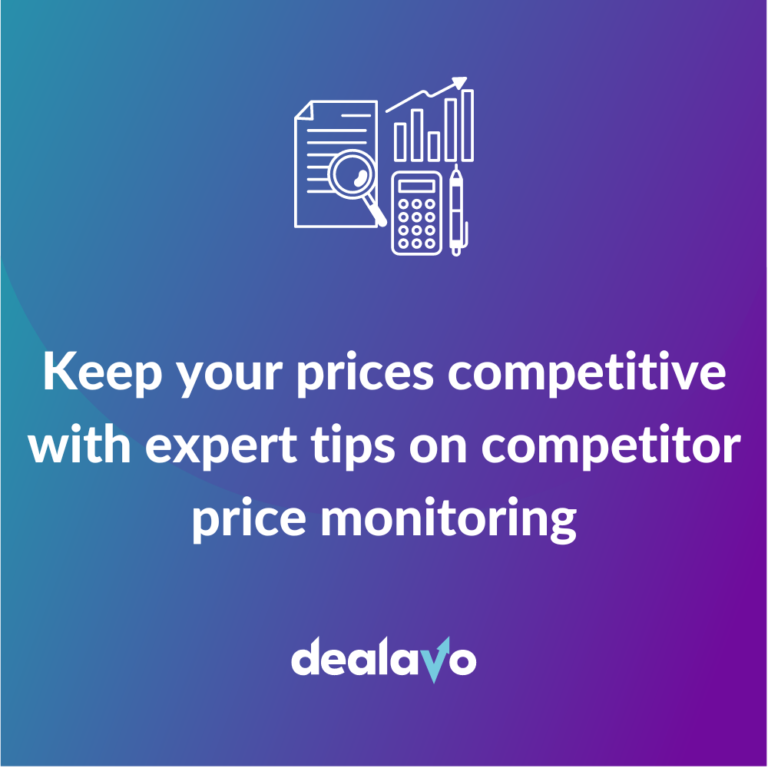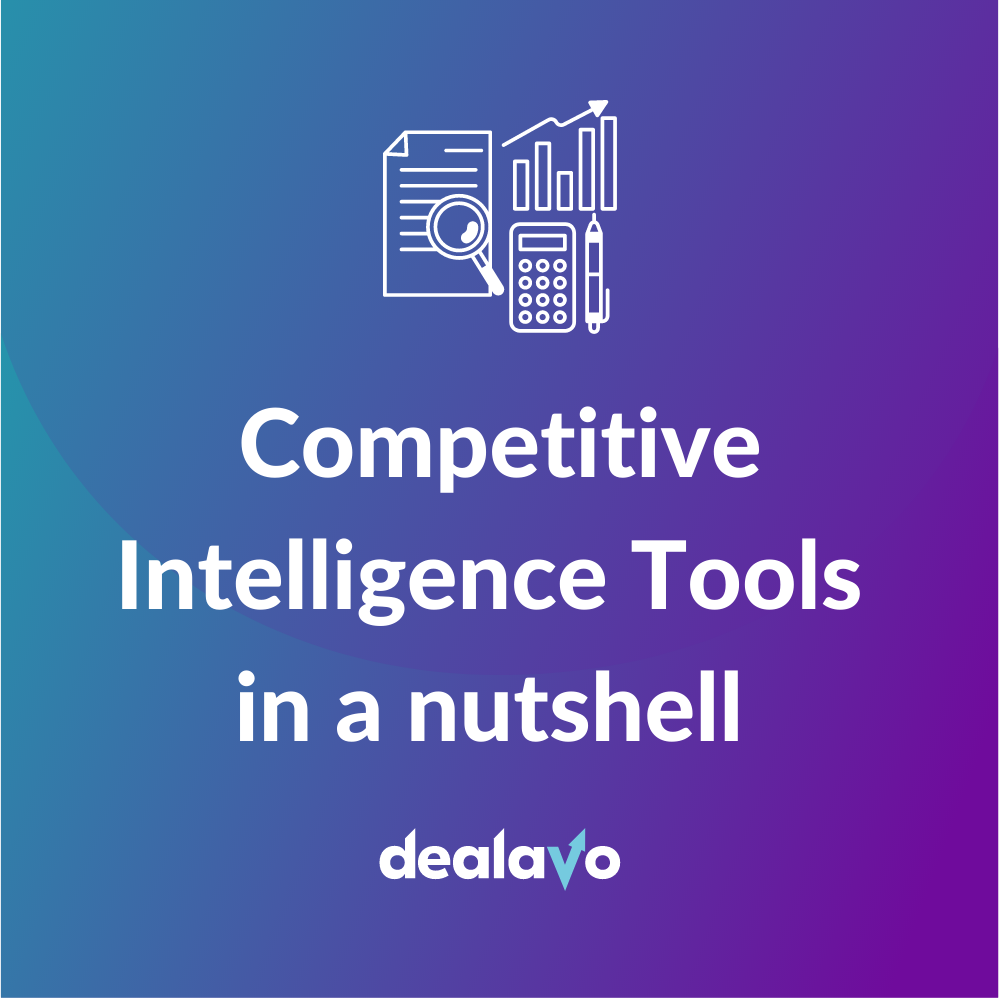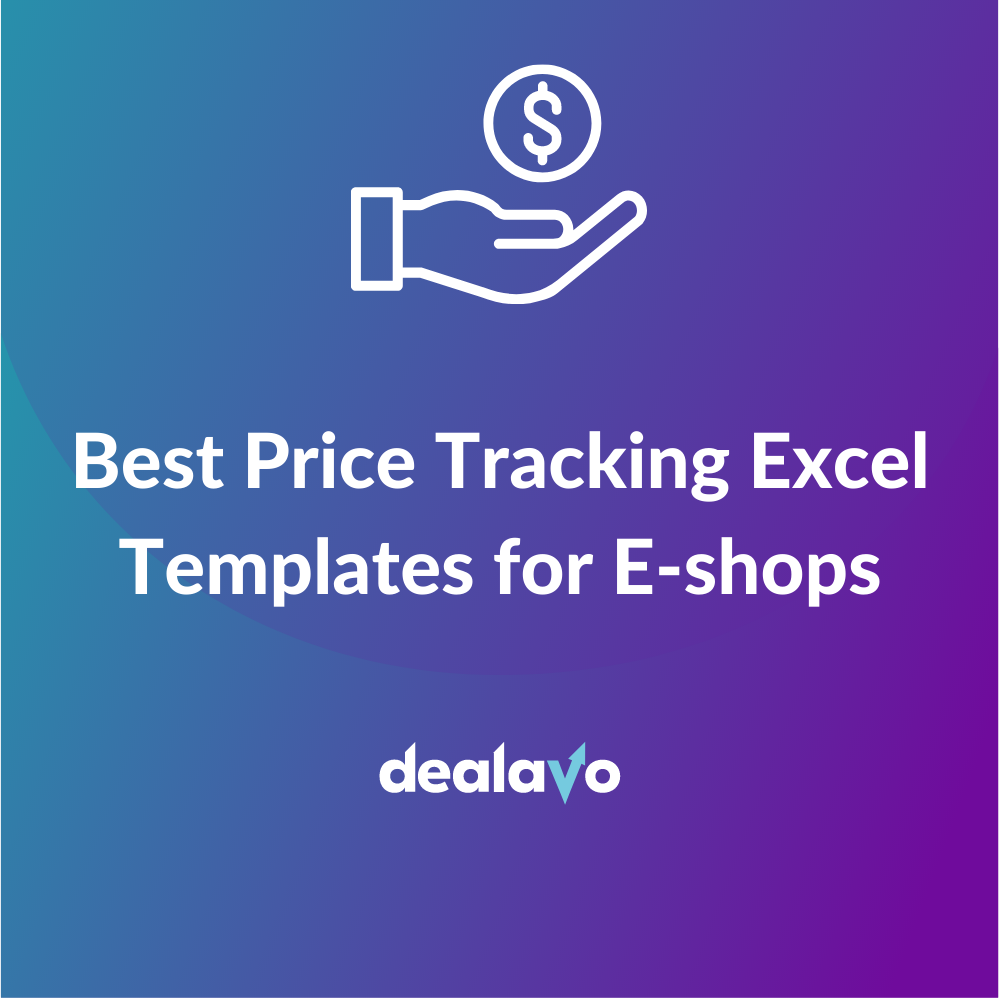Price Tracker: What you need to know to maximize your e-commerce prices
- 06 November 2023
Prices play a huge role in e-commerce – for the majority of customers, it’s the number one factor when shopping online. However, monitoring prices manually takes a lot of time and is ineffective. This is where Dealavo Price Tracker steps in the game – let’s see what you can gain through online price tracking.
According to a study published earlier this year, for 63% of surveyed customers, price is the number-one factor when shopping offline (for comparison, 70% said so about in-store shopping). Interestingly, product quality is the number two factor, meaning even stores selling high-quality products need to pay attention to their prices.
Source: https://www.firstinsight.com/blog/price-vs-quality-what-matters-most-to-consumers
And this is where price tracking comes in handy. With an effective price tracker, you have access to data about product prices in your niche/sector. If you use an advanced price tracker, you will also get more information, including:
- Both granular and aggregated data about your competitors’ prices
- Promotions offered by other companies
- Products that are currently out of stock
How can you use data from a price tracker?
The short answer is to improve prices in your own store. Having access to the latest price data in your sector and selected competitors, you can assess how attractive your offer is to potential customers. This question is two-fold; on the one hand, too low prices will lower your earnings and can kill your business’ profitability. On the other hand, too high prices will scare off customers, and your sales will go down immediately.
That’s why it’s so crucial to get prices just right – you need this perfect balance between your profits and the attractiveness of your prices. With a good price tracker, this goal is 100% attainable.
LEGIBLE TEMPLATES
What’s crucial concerning price tracker data is the legibility of your pricing insights. This is where price tracking templates come in handy.
If you have an Excel price tracking template, you will surely find it’s a great way to clearly report and analyze all the relevant data concerning your competitors’ prices. Depending on your needs, you can create such templates on your own or use the ready-made ones available in our platform’s dashboard.
Monitor MAP/MSRP prices
Depending on where you’re running your business, you might want to track MAP and/or MSPR prices. However, it’s important to note that MAP (Minimum Advertised Price) is applicable in the US but not in the European Union. If you operate in the EU, you must remember that European laws restrict brands to force minimum advertised prices to retailers as it is considered as limiting competition.
On the other hand, the MSRP price is “safer”. MSPR stands for Manufacturer’s Suggested Retail Price and it can be applicable both in Europe and US. In Europe, it’s usually named Recommended Retail Price (RRP), but essentially, MSPR and RRP are the exact same thing.
We discussed this question thoroughly on our blog: The Ultimate Guide to MAP/MSRP Monitoring. If you run your store in the United States, you need a price tracker that’s “compatible” with this market and its regulations. Find out more about price trackers for the US market.
Pick the right price tracker for your business
When it comes to price tracking software, there are numerous options out there. In fact, you have at least 6 competitor price tracking platforms you can use in 2023. Let’s have a quick look at them:
- PriSync: It’s a versatile online retail tool for price optimization and inventory management. It monitors competitor prices and stock levels, facilitating communication through various channels. PriSync offers data import, real-time stock tracking, pricing analytics, and more. Subscription plans cost $99 to $399 per month. Read more about Prisync alternatives.
- Price2Spy: It’s an online price monitoring tool suitable for manufacturers, brands, and distributors. It provides functionality to monitor, compare, and assess competitor product prices and availability, along with reporting and analysis options. Users can access historical pricing trends for confident pricing decisions. The dashboard offers real-time updates and email alerts. Pricing starts at $26.95, with a tiered structure based on the number of product URLs in your account. Read more about Price2Spy alternatives.
- Competera: Competera is an AI-fueled platform that uses over 60 pricing and non-pricing factors to provide comprehensive insights for making well-informed pricing decisions. Their competitor data gives you access to accurate, real-time data on competitors in different countries, even with different languages and currencies. Competera offers subscription plans only upon request.
- Feedvisor: It’s as a comprehensive e-commerce intelligence hub that harnesses big data and AI to provide insights to online merchants. What sets Feedvisor apart is its exclusive focus on Amazon. Feedvisor offers AI-Based advertising, including keyword selection, bid optimization, and budgeting; there’s a Patented Algo-Repricer for Buy Box optimization, private-label pricing, and competitive analysis. Lastly, Feedvisor comes with Data-Backed Intelligence encompassing competition analysis, SKU tracking, and market share monitoring.
- Skuuudle: This tool provides price tracking and competitive monitoring on local and global platforms, allowing timely adjustments to align with market dynamics. Skuuudle offers a customizable analytics dashboard for deriving insights from historical data, aiding in setting targets for seasonal fluctuations and long-term growth. Pricing is tailored to each client’s specific requirements.
- Dealavo: We offer a comprehensive AI-powered price tracking and dynamic pricing platform for online stores and manufacturers, offering international coverage in over 30 countries across various sales channels like online stores, price comparison websites, and marketplaces. With our help, you will get detailed competitor pricing, promotion, and stock information, but also automated pricing adjustments through dynamic pricing. And our ROAS Booster will help you enhance your CPC campaigns. Our tool can be integrated with popular e-commerce platforms such as Magento, Shoplo, Baselinker, WooCommerce, and PrestaShop.
If you are interested in checking other price monitoring software, please refer to this comprehensive guide on our blog: Best Price Monitoring Software. Other tools you might want to check before making a decision comprise Omnia Retail, PriceGrid, and PriceLab.
Where should you monitor prices?

Again, the short answer is wherever you are present with your offer. Typically, e-commerce business owners want to monitor:
- Competitive online stores
- Marketplaces
- Price comparison engines
- Offline stores
Every decent price tracker will enable you to monitor prices in several different sources.
PRICE TRACKING IN COMPETITIVE ONLINE STORES
With a good price tracker, you can create a list of stores competing with you. Next, your price monitoring tool will track prices in those stores and provide you with data on their prices. This will help you understand your positioning versus your competitors.
Dealavo provides you with high-quality competitor pricing data thanks to AI algorithms, streamlined processes, and manual work of QA and Data Cleaning operators. As a result, you get actionable information that can be put to work almost immediately.
PRICE MONITORING ON MARKETPLACES
Marketplaces are great when it comes to building visibility among new potential customers. In fact, the majority of them start looking for new products on Amazon! That’s what over 60% of US customers said in a recent study. Amazon even surpassed search engines (49%):
Source: https://www.insiderintelligence.com/content/online-shoppers-search-on-amazon
Places like Amazon and Allegro (in Poland) are full of potential customers but also your competitors. If you want to have comprehensive information about your situation, you need to monitor marketplaces (even if you’re not selling there at the moment).
Find out more about the best price tracking software for Amazon.
PRICE TRACKING IN PRICE COMPARISON ENGINES
Here, Google Shopping is your obvious choice. With over 1 billion searches each month, Google Shopping gives you access to a huge base of potential customers, even if they’ve never heard about your store. Moreover, thanks to GSA (Google Shopping Ads), you can promote your store in an effective CPC model (you pay for each click).
What about other price comparison websites? They are usually divided by country. For example, in Poland, Ceneo.pl is an undisputed number one. If you want to succeed in the Polish market, it’s your obvious choice.
If you are selling in Germany, you should be vitally interested in Idealo.de. It’s a price comparison website established in Germany in 2000. Idealo is available for retailers from many European countries, including the UK, Italy, France, and Spain, and our price monitoring tool is fully integrated with this price comparison website.
OFFLINE PRICE MONITORING
Many people think price monitoring can work only in the online environment, but the truth is offline price monitoring is possible, too! Offline price tracking usually happens using three basic solutions: Electronic shelf labels (ESLs) – these are digital price tags linked to a central system, enabling remote updates of pricing information across multiple stores. Next, we can use in-store cameras equipped with computer vision to capture shelf images, with algorithms extracting pricing details. Alternatively, price-tracking companies can benefit from partnerships with retailers willing to grant access to data. These platforms collect and analyze information from diverse sources, including point-of-sale systems, to derive pricing insights.
Price tracking in different market sectors
In general, we can say that price tracking is useful in all e-commerce sectors. However, there are four sectors that are especially active and competitive. If you operate in at least one of them, an effective price tracker can be a real game-changer in your store.
FMCG
Estimations are that in 2025, FMCG will constitute 10% of the global FMCG market (compared to 5.1% in 2018):
Source: https://www.statista.com/statistics/803508/online-share-fmcg-market-worldwide/
Such dynamic growth requires more players – online retailers – offering FMCG products. In short, you can expect your competition to grow in the coming months. You need to be constantly mindful of the competition from the largest FMCG companies, both manufacturers and retailers, such as Walmart. Those big players get much better deals from manufacturers because they usually order tens of millions of units, making it difficult for smaller players to force their way. With price monitoring in the FMCG sector, you can assess your situation better and act accordingly with the latest market data.
FASHION
In almost all e-commerce reports out there, fashion is in the top 3 product categories. People buy clothing and shoes online mainly because of the larger selection of products compared to physical stores. And with Zalando, you can buy the latest fashion collections from premium brands even if you live in a small town where there are no premium stores.
What’s also important is that fashion is one of those market sectors that eagerly utilize advanced technologies, such as augmented reality. All to help customers see whether a given product will look good on them without the need to try it on.
On the other hand, this sector is quite challenging, primarily because of many sizes and color versions of the same product. Plus, the return rate is one of the highest ones – many customers order several sizes on purpose so that they can try them on at home, keep one, and send the rest back. This makes fashion a challenging niche to work with. If you’re thinking about starting a fashion online store, make sure your prices are set accurately!
Read more about price monitoring in the fashion sector.
PHARMACEUTICAL
According to the Data Bridge Market Research, this market sector will continue to grow at 21.30% CAGR all the way to 2072. The COVID-19 pandemic is one of the main reasons why customers started buying drugs and other pharmaceutical products online. Stores operating in this sector need to be aware of many legal restrictions concerning storing and transporting pharma products. Plus, with so many medicines available in the market, tracking prices manually is close to impossible. With a good price tracker for pharmaceutical companies, you can keep all the relevant price data in one place.
HEALTH & BEAUTY
When it comes to the last sector we want to talk about today, the biggest challenge that many companies face when selling health & beauty products is several variations of the same product (e.g., many cosmetics are available in 50 ml, 40 ml, or larger packages). Here, AR also comes in handy, especially when offering lipsticks. It’s a good idea to provide customers with a way of seeing how a given color or shade will look on them. That’s what L’Oreal does with their products:
Embedded video:
Apart from that, you need a good price tracker for hundreds of products in your offer. When it comes to the health & beauty niche, we treat every product version and every package size as a separate product. This gives you full insight into prices in this uneasy industry.
Summary: Start using price tracking software today!
Outrunning your competition in the e-commerce world is a big challenge. You need every help you can get, and a good price tracking tool will help you get ahead with accurately set prices for all the products in your offer.
And what if you’ve just started or perhaps just thinking about starting an e-commerce business? We encourage you to include price monitoring in your strategy as soon as possible. Compared to possible benefits, costs are more than reasonable, and you can get an early advantage over your future competitors.
If you’re thinking about creating an e-commerce startup, there are seven factors you need to consider. We discuss them all in this article: Getting the e-commerce pricing right for startups: 7 factors to consider in your pricing strategy.
What should be your next step? If you already have an online store, you can start for free. Just fill out this short contact form and ask for a free trial of the Dealavo pricing platform.





